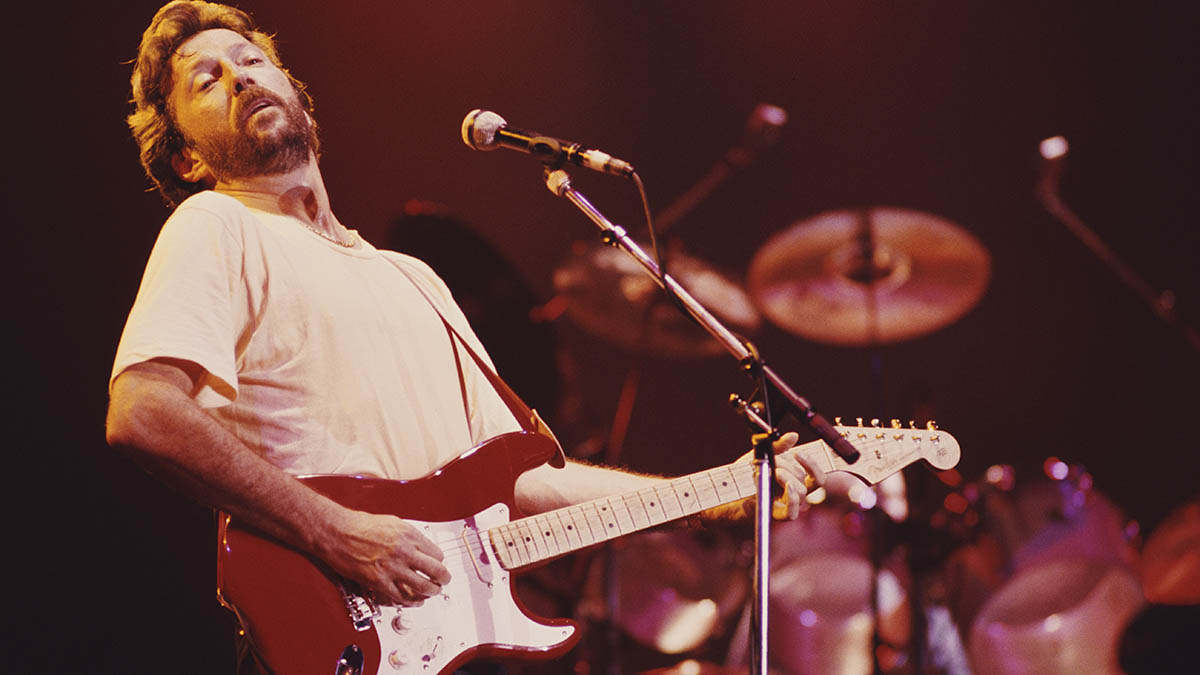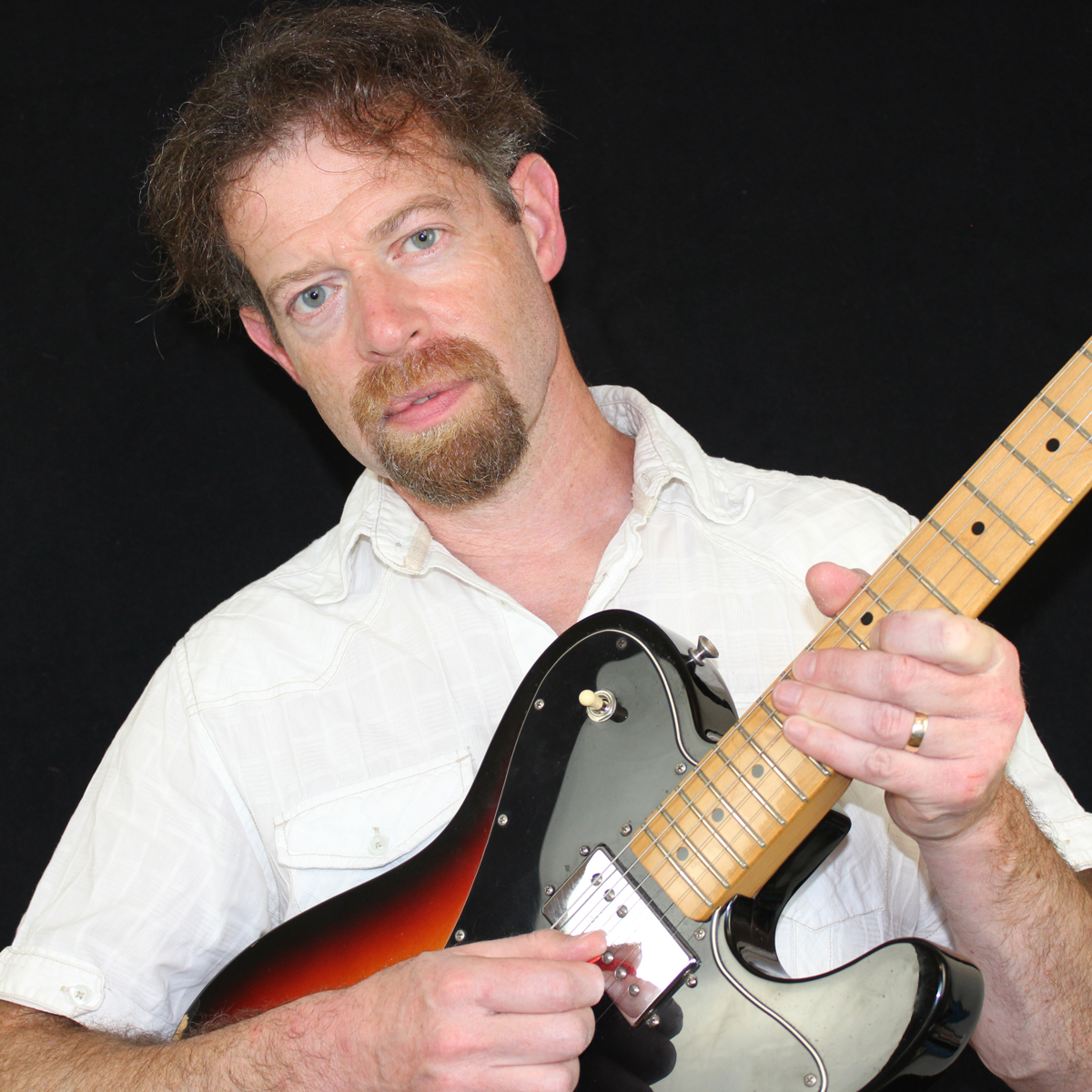Learn the playing styles of every Eric Clapton era with this epic lesson
From John Mayall’s Bluesbreakers to Cream, Derek and the Dominoes and MTV Unplugged, we present 5 Clapton lessons for the Slowhand in training...

There have been few players as important to the shaping of the sound of blues-rock guitar as Eric Clapton.
A true popular music superstar, the multi-Grammy winning Clapton has achieved iconic status, not only as a blues-rock guitar legend, but also as a mainstream artist who has enjoyed worldwide fame for decades, with songs such like the anthemic Layla, Wonderful Tonight, Rule the World, and My Father’s Eyes, as well as with his cover versions of songs including Bob Marley’s I Shot The Sheriff, or JJ Cale’s iconic Cocaine.
Clapton’s effect on the development of blues-rock guitar is a matter of modern musical folklore. At a time when young blues disciples such as he, Jimmy Page, John Mayall and Keith Richards were discovering and devouring the music of original American blues artists, his subsequent success in bands such as Cream helped bring the sound of British blues to the USA, generating a resurgence of interest in the source music to new generations, as well as introducing his fluid, improvisation-based lead guitar style.
Clapton was already a notable player in the UK, from stints in The Yardbirds and John Mayall’s Bluesbreakers, but as part of the so called ‘British Invasion’, he was exporting his loud, energy infused sound to eager new audiences, and by extension, to a legion of new guitar players.
After the breakup of Cream, Clapton embarked on other projects, such as Blind Faith, Delaney And Bonnie, and Derek and the Dominos. His first eponymously titled solo album in 1970 established him as a solo artist, and was the first of many over the ensuing decades to produce classics like Lay Down Sally, Bad Love, and Tears in Heaven, which cemented his status as a legend.
In this feature, I have written five Clapton-style pieces that represent his approaches through various seminal albums. Although his music has differing stylistic influences, he generally favours minor and major pentatonic-scale, blues-based lines, combining melodic phrases with bending, hammer-ons and pull-offs, with faster, flashier flurries when necessary. He also sometimes borrows notes such as the 2nd and b6th from the natural minor scale.
Piece 1: ‘Beano’ period. This piece focuses on EC’s time with John Mayall, and the album John Mayall’s Bluesbreakers with Eric Clapton (1966). The ‘Beano’ album showcases Clapton’s playing through various blues covers and Mayall originals, such as Otis Rush’s All Your Love, and Mayall bluesers Have You Heard, and Double Crossing Time. Eric played his Gibson Les Paul into a loud Marshall combo, instantly defining the sound of blues-rock guitar.
Piece 2: Regarded as the first ‘supergroup’, Cream blended blues-rock with the psychedelic sound of the times. You can hear his legendary ‘woman tone’ here, too, where Eric turned the guitar full up and the tone controls down, to create a thick, warm tone from his Gibsons and Marshalls.
Piece 3: Derek and the Dominos. Although only producing one album, here Clapton teamed up with Jim Gordon, Bobby Whitlock, Carl Radle and Duane Allman. With blues covers like Have You Ever Loved A Woman and Key to the Highway, the album is of course best known for the anthemic Layla, where Allman plays the famous slide parts. Also here EC started playing Fender Strats (notably ‘Brownie’) into a Fender Champ for the recordings.
Piece 4: Journeyman has a much more pop-rock slant with its ’80s drum and synth sounds combined with Clapton’s creamy distorted guitar. By this time he was using the Fender Eric Clapton signature Strat with Lace Sensors and mid-boost circuit, which enabled him to achieve the thicker tones of humbucking guitars.
Piece 5: MTV’s 1992 Unplugged concert featured EC and band performing acoustic versions of classic songs like Layla, but also blues standards such as Nobody Wants You When You’re Down And Out and Before You Accuse Me. It also featured Eric’s perhaps underrated acoustic technique. The album and TV show achieved staggering success, becoming the most successful live album of all time, and also EC’s biggest-selling record.
Get the tone
Amp settings: Gain 7, Bass 6, Middle 6, Treble 8, Reverb 3
Clapton has used various electric guitars and guitar amps, but you can go for either a single-coil or humbucking guitar with an overdriven amp or overdrive pedal. Experiment with Eric’s fabled ‘woman tone’ by rolling down the tone control to almost off on your guitar, and then adding gain to thicken the sound. A splash of reverb will provide smoothness and ambience.
Piece 1. ‘Beano’ period
This is a 12-bar blues in the key of D minor with a pick-up lick starting the tune. It mostly uses notes from D minor pentatonic (D-F-G-A-C). I played this on the bridge pickup of my Gibson Les Paul. For the pick-up lick, make sure you come in on the 1& of the second bar of the count-in with the D minor arpeggio (D-F-A). Aim to ‘wobble’ the whole chord without stifling any of the notes.
[Bar 6, beat 2] Re-pick the bent second-string, 13th-fret D note, but follow the vibrato with a quarter-tone blues curl while the string is still bent, pushing the note up in pitch slightly, so it becomes close to, but not quite making, a D#.
[Bar 7, beat 1] Hold the 10th-fret, third string F note (b3rd) and bend it accurately up by a semitone to the major 3rd F# note on beat 2.
[Bars 9-10] Make sure you pitch the minor 3rd interval accurately on the second string from the 15th-fret D note to the 18th-fret F note.
[Bar 12] When you add vibrato to the very last note, have a go at emulating Clapton’s vibrato technique. When vibrato-ing static notes on upper strings, he tends to keep his palm parallel to the neck, take his thumb off the back of the neck and move his hand up and down.
Piece 2. Cream period
This 27 bar-long piece has a key centre of C minor, although the tonal centre is F minor. It pretty much only uses notes from F minor pentatonic scale (F-Ab-Bb-C-Eb). I also played this on my Les Paul, but used the neck pickup, rolling the tone back for the warbling ‘woman tone’ that Eric developed around this time.
[Bars 1-8] The eight-bar chord intro needs to have a cleaner sound than the lead part, so roll the guitar volume back here to clean up the sound.
[Bars 19-20] Beat 4 of bar 19 contains a fast sextuplet across the first and second strings. It repeats through bar 20, and is pretty fast. Try an inside picking approach; downstroke pick on the first string and un upstroke on the second.
Piece 3. Derek And The Dominos period
The first section is 16 bars long and in the key of G minor, while the second is 10 bars long and in Eb major. There are melodic phrases using notes from G minor pentatonic (G-Bb-C-D-F) and G natural minor (G-A-Bb-C-D-Eb-F) in section 1, and mainly Eb major pentatonic (Eb-F-G-Bb-C) in section 2. I played my Fender Strat.
Piece 4. Journeyman period
This piece has a key centre of D Major, but a tonal centre of E Minor. It is 17 bars long and demonstrates Clapton-esque approaches with the higher-gain sound of his later period. Again, I used my Fender Stratocaster here. The tune mainly uses notes from the E minor pentatonic scale (E-G-A-B-D), but also from E Dorian mode (E-F#-G-A-B-C#-D), and E natural minor (E-F#-G-A-B-C-D) in places.
[Bar 2] On beat 2&, note the sustained F# note (19th fret, second string). This is the major 2nd interval from the E Dorian mode and gives a melodic, non-pentatonic flavour to the phrase. This note appears again in bar 8.
[Bar 6] The second-string bend at the end of this bar is a major 3rd going from the G note at the 20th fret up to a B note on what would be the 24th. This is a hard interval to bend, so go easy if you’re not used to big bends.
[Bars 11-12] The rapid 16th-note phrase in these two bars are quite tricky to fret cleanly, so go slowly. Note again the use of that major 2nd, F# note in bar 12.
[Bars 15-16] The E Dorian (or natural Minor) scale based phrase in bar 15 shows Clapton’s non-pentatonic approach, and the pinched harmonic in bar 16 is reminiscent of his solo in Bad Love. Aim to hit the octave pitch accurately.
Piece 5. Unplugged period
This acoustic fingerstyle piece is a straightforward 12-bar blues in E. It goes round twice, with a brief alteration in structure in the first four bars the second time round.
We are in 12/8 time and rely heavily on the monotonic bass technique common in acoustic blues, which involves a consistent palm-muted pulsing bass (usually the root note) on each beat of the bar, played with the side of the picking-hand thumb, while the fingers pluck the rhythm or lead line.
This technique involves considerable coordination, but is immensely satisfying as the guitar can sound like a mini orchestra, whether solo or with other instruments.
When looking at the music, use your thumb for the notes with the stems pointing downwards and your fingers for the notes with the stems pointing upwards. As a general rule, use the first finger of your picking hand on the third string, your second finger on the second string and your third finger on the first string. Clapton, and acoustic blues players in general, often dig in hard, but I’d suggest learning the piece accurately before playing it with too much intensity.
Get The Pick Newsletter
All the latest guitar news, interviews, lessons, reviews, deals and more, direct to your inbox!
Andy Saphir has been a professional guitar player and teacher for over 25 years. Graduating with distinction from London’s prestigious Guitar Institute in 1995, he has gone on to gain a reputation as one of the UK’s top country guitarists. Specialising in country and blues, Andy is a versatile, multi-genre player and has a successful international performing career, touring with numerous shows and bands, including the Blues Brothers Approved. Andy taught on the guitar faculty at London’s ICMP for many years, and is a longtime contributor to Guitar Techniques Magazine, as well as being a Jam Track Central artist. Andy teaches in-person guitar lessons from Cambridgeshire UK, or remotely globally.
“There are so many sounds to be discovered when you get away from using a pick”: Jared James Nichols shows you how to add “snap, crackle and pop” to your playing with banjo rolls and string snaps
Don't let chord inversions bamboozle you. It's simply the case of shuffling the notes around








![Joe Bonamassa [left] wears a deep blue suit and polka-dotted shirt and plays his green refin Strat; the late Irish blues legend Rory Gallagher [right] screams and inflicts some punishment on his heavily worn number one Stratocaster.](https://cdn.mos.cms.futurecdn.net/cw28h7UBcTVfTLs7p7eiLe.jpg)


